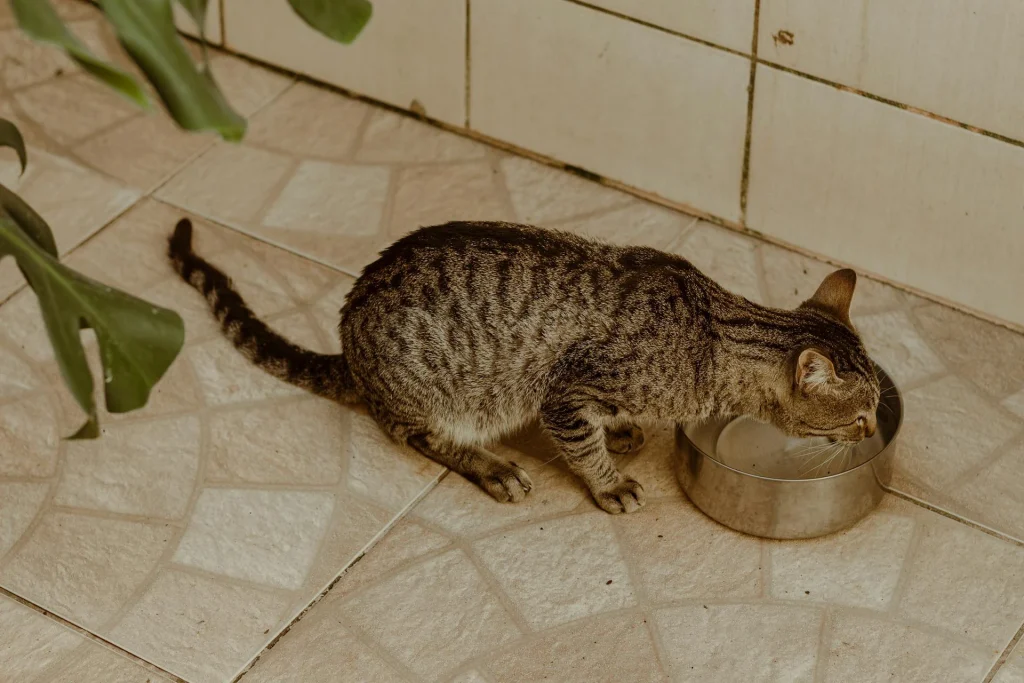Cats are creatures of habits when it comes to routine, especially with their food. It’s no easy task to transition a cat from dry food to wet food. But doing so can be the best decision for their health. In this article we will explore transitioning diabetic cats from dry to wet cat food. Check out our main article Dry Cat Food for Diabetic Cats Without Vet Prescription.
Let’s dive into why wet food is ideal for diabetic cats and how to make this transition as smooth as possible.
Benefits of Transitioning Diabetic Cats to Wet Food
The benefits of transitioning your diabetic cat to wet food is that it improves their health. Every cat should ideally eat the food that’s closest to their wild prey. For our convenience there are hundreds of cat food brands to choose from when it comes to that. Wet food is an ideal option as it is a safe, nutrient-packed meal which fits the cat’s nutritional and protein needs. Dry food for pets is something we came up with for our convenience and to save money. It does not do much benefit to our cats.
The problem with dry food is:
- Too much carbohydrates
- Too little animal protein
- Sugar
- Too much calories per unit
- Too much plant-based protein
- Not enough moisture content
Dry food often contains too much sugar, too little protein, which is not suitable or even harmful for diabetic cats. The main issue is the blood spikes. The carbs in dry kibble are raising the blood sugar level too fast and that’s not good for diabetic cats. The benefit of transitioning your cat to wet food is that it can help with improving the cat’s condition.
If your cat is addicted to dry food, chances are it eats too much of it. Which can lead to weight gain because of how densely those calories are packed. Which can lead to diabetes, as weight gain in cats is one of the causes for diabetes. If you transition your cat successfully from dry cat food to wet food, it has a chance to normalize your cat’s insulin response and blood sugar levels. In some cases the diabetes is reversible this way and that’s the goal.
Transitioning Dry Food Addicts to Wet Food
But how to introduce a cat to wet food, if they are already addicted to dry food? It might be a slow process, but it is worth it.
- Introduce new food gradually
- Slowly increase the amount of new food over 2 weeks
- Keep track of how much is actually eaten
This needs to be done gradually in order to not upset the cat’s stomach. You can start by adding a small portion of wet food into their dry food. Increase the amount of wet food gradually over the course of 2 weeks. Keep an eye on how much the cat eats during that time as they can become food-avoidant.
- Warm up the food a little
- Experiment with different textures
- Be patient with your kitty
Another step you can try is warming the wet food slightly to increase its aroma. This can make it more appetizing for your cat. Cats can have a preference for wet food texture, so experiment by trying to introduce pates, saucy wet food, mousse, or chunks in jelly. You have to be patient with the cat during a time like this. Let them adjust at their own pace. Check out the wet food selection for diabetic cats on Chewy.
Signs Your Cat is Transitioning to Wet Food
After transitioning diabetic cats from dry to wet food there should be signs of improvement. As you are introducing your cat to wet food, there are signs that the cat is adjusting well. Good blood sugar levels are a main part of it. If coupled with playtime for your cat, you may also notice increased energy levels, fewer hunger pangs, and improved coat condition as a result.
On the other hand if your cat is struggling to adjust to the new diet, you may see signs of digestive upset, such as diarrhea, vomiting, or a reluctance to eat.

Tips to Transition Your Cat to Wet Food
Cats are creatures of routine. So are humans when we don’t struggle against it. Upkeep a feeding schedule at a consistent time, every day, will make it easier and less stressful for your cat. Make sure to feed your diabetic cat at regular time intervals.
Consistent feeding schedule will make your cat anticipate the mealtimes. Smaller portions but frequently, can reduce the chance of an upset stomach and vomiting. Then some general good practices, provide a quiet area for your cat to eat in without distractions or noise, or constant nearby activity. Some cats are very cautious about their meals even in their homes.
Try sprinkling the wet food with a little bit of their favorite dry food to make it more attractive. Place some treats next to the bowl. This can also make them get used to eating around the wet food aroma which they might avoid if they are not familiar with it/ or do not like it.
Conclusion
Transitioning your diabetic cat from dry food to wet food can be a hard task. But their health depends on it. Now that you know a few steps on how to do that, hopefully your kitty will move to a recovery stage in no time. If you are curious about trying to introduce your cat to raw wet food, check out our article on Best Raw Food for Diabetic Cats 2024.

